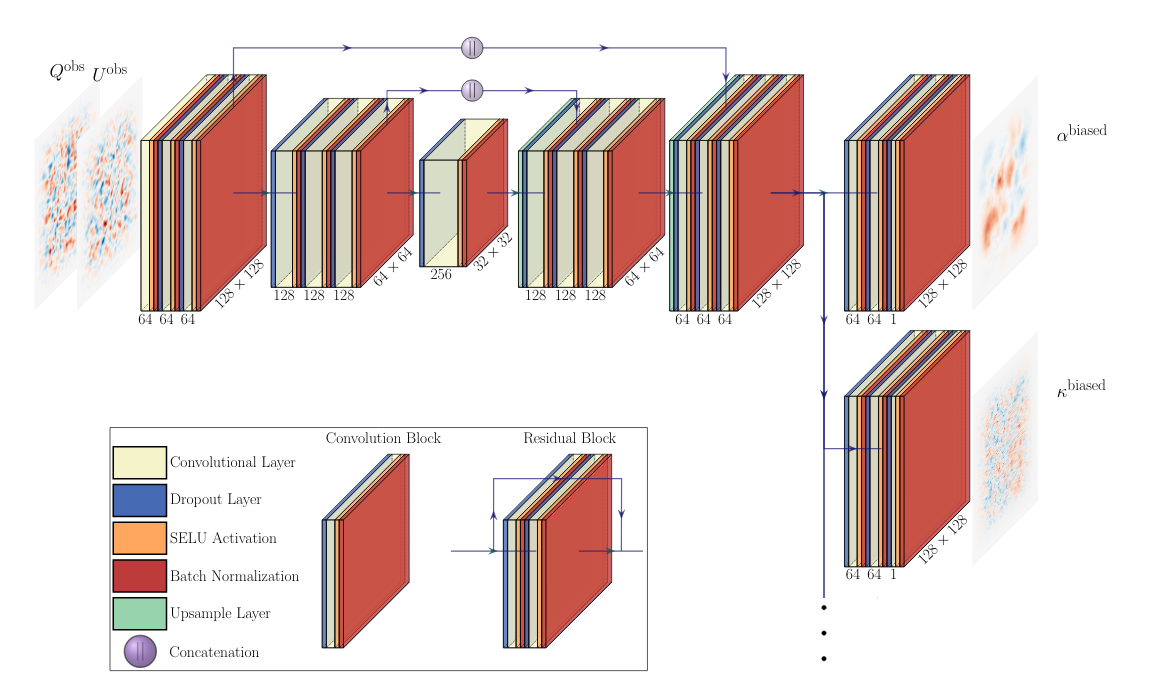Reconstructing Patchy Reionization with Deep Learning
The precision anticipated from next-generation cosmic microwave background (CMB) surveys will create opportunities for characteristically new insights into cosmology. Secondary anisotropies of the CMB will have an increased importance in forthcoming surveys, due both to the cosmological information they encode and the role they play in obscuring our view of the primary fluctuations. Quadratic estimators have become the standard tools for reconstructing the fields that distort the primary CMB and produce secondary anisotropies. While successful for lensing reconstruction with current data, quadratic estimators will be sub-optimal for the reconstruction of lensing and other effects at the expected sensitivity of the upcoming CMB surveys. In this paper we describe a convolutional neural network, ResUNet-CMB, that is capable of the simultaneous reconstruction of two sources of secondary CMB anisotropies, gravitational lensing and patchy reionization. We show that the ResUNet-CMB network significantly outperforms the quadratic estimator at low noise levels and is not subject to the lensing-induced bias on the patchy reionization reconstruction that would be present with a straightforward application of the quadratic estimator.
PDF Abstract